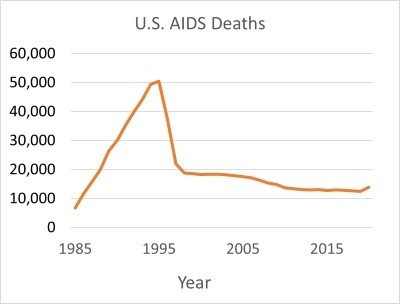FOR IMMEDIATE RELEASE | September 30, 2022
Historic Chemical Landmark designation for HIV treatment that dramatically reduced AIDS deaths
WASHINGTON, Sept. 30, 2022 — Before the COVID-19 pandemic, the AIDS pandemic spread death and fear around the globe. Since its emergence in the early 1980s, AIDS has claimed more than 40 million lives worldwide. Yet that toll would be far higher without the treatment known as highly active antiretroviral therapy (HAART). On Oct. 7, the American Chemical Society (ACS) will honor the discovery of this life-saving treatment with the National Historic Chemical Landmark designation.
The Landmark dedication ceremony will take place from 10 a.m. to noon ET at Merck’s site in West Point, Pennsylvania.
“This Landmark honors the many dedicated researchers, physicians and patients who had a role in the development of HAART,” says ACS President Angela K. Wilson, Ph.D. “This therapy has saved millions of lives and turned a once seemingly undefeatable pandemic into a manageable chronic disease.”
AZT, the first treatment for AIDS, was approved by the U.S. Food and Drug Administration in 1987. But initial excitement changed to disappointment once it became clear that the drug’s benefit lasted only about a year. That’s because HIV, the virus that causes AIDS, gradually develops resistance to the treatment.
AZT disrupts just one pathway in the process that HIV uses to take over and destroy the body’s immune cells. To gain ground against the disease, researchers at Abbott, Burroughs Wellcome, Merck, Roche, and elsewhere sought new treatments to attack the virus through other pathways. Over the next decade, the companies developed antiretroviral drugs that work synergistically to defend people from the infection when used in combination.
After the resulting HAART treatment was introduced in the U.S. in the mid-1990s, the number of AIDS deaths dropped precipitously. Worldwide, as the combination therapy became more widely available, the AIDS death rate began declining after 2005. By 2021, 28.7 million people were receiving HIV antiretrovirals globally, out of an estimated 38.4 million people with HIV, according to UNAIDS. And that is truly a Landmark achievement.
ACS established the National Historic Chemical Landmarks program in 1992 to recognize seminal events in the history of chemistry and to increase awareness of the contributions of chemistry to society. Past Landmarks include the invention of Polaroid instant photography, the discovery and production of penicillin, the invention of synthetic plastics and the works of such notable scientific figures as educator George Washington Carver and environmentalist Rachel Carson. For more information, visit www.acs.org/landmarks.
To automatically receive press releases from the American Chemical Society, contact newsroom@acs.org.
Note: ACS does not conduct research, but publishes and publicizes peer-reviewed scientific studies.
Media Contact
ACS Newsroom
newsroom@acs.org

View larger image.

